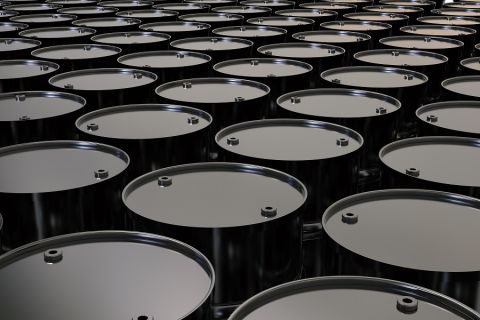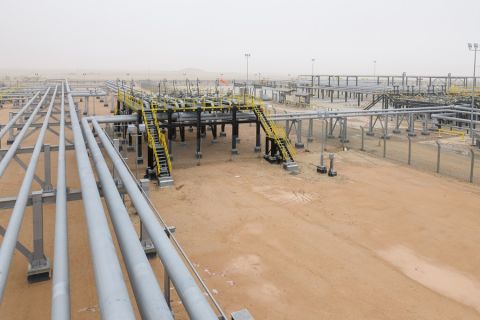The U.S. natural gas industry has won the battle-let's not lose the war. The industry's growth is real and sustainable, if you believe supply and demand trends, and drilling rig counts versus gas deliverability. Many analysts say $3 gas is here to stay for at least three to five years. Longer term, don't forget that fuel cells and other hybrid power and transportation technologies also will rely on gas. But right now, don't underestimate the power of the spoiled U.S. consumer. Irritation over gasoline prices will soon be surpassed by anger over soaring heating bills this winter. At press time, the California Public Utility Commission had already capitulated, rolling back residential rates for customers of San Diego Gas & Electric by 43%. So much for deregulation. "You cannot deregulate in a supply shortage situation. Unlike when gas was deregulated in the mid-1980s, there is no electricity bubble," Coastal Corp. chief executive officer David Arledge said during a recent Houston speech. "The mistake is that no power plants were built in California in the past decade [even though the population has climbed significantly and the economy has boomed]. We're going to see the California experience repeated in other states." Meanwhile, anecdotal evidence about the precarious supply-demand balance is en-"light"-ening. A Houston banker told me he experienced power blackouts while at the Ritz-Carlton Hotel in Los Angeles on business. For an hour, the lights dimmed in the restaurant; then the conference rooms. When I stopped by a huge new grocery store in a Denver suburb in August, the first thing that greeted me was the sign in the entry way: "Public Service Co. of Colorado has asked us to conserve power, so we are dimming the lights...." This could bring new meaning to feeling the tomatoes, eh? Last year, the local utility hooked up 40,000 new gas meters in Denver and along the fast-growing Front Range. It has sent out bidding requests for eight new power plants in the state. "The battle to fuel growth in power generation is over and natural gas has won," Arledge declared in his Houston speech. "Growth of gas demand from the Internet and power generation is our prize for the taking." He admitted even he was stunned by the high gas prices seen this year. Previously, Arledge, who is current chair of the Interstate Natural Gas Association of America (INGAA), had publicly said $3 was the ceiling because he thought fuel switching would kick in. More than 98% of the 250 power plants under construction or in development in the U.S. will be gas fired, thus boosting demand in that segment alone from 5.5 Tcf now to 10.3 Tcf by 2010, Arledge said. "Over the next five years, power generation will take over as the primary consumer of gas, needing more than residential or commercial users." A surprisingly large component of gas demand growth comes from the digital economy. Computers, servers and Internet traffic soak up an estimated 7% to 10% of total electricity demand now, with Internet demand for power doubling every three months, he added. At the recent Rocky Mountain Gas Strategies Conference in Denver, several speakers echoed this view. Estimates peg Internet usage at up to 50% of electricity demand in 10 or 15 years. In this new world of servers, fiber optics and high-speed switching, the new standard for power reliability has sharpened to what power industry people call "six nines." That's reliability of 99.9999%-or, the equivalent of power interruption for only 30 seconds per year! "AOL, Yahoo, Charles Schwab and others require this level of service and they are willing to pay a premium for it," Arledge said. El Paso group executive vice president Ralph Eads, speaking at the Producing Property Exchange (PPX) last month, said that in order to supply average consumption of 24 Tcf per year between now and 2010-and assuming average finding costs of $1.25 per thousand cubic feet equivalent-this industry faces average annual capital expenditures of $30 billion. Bankers and investors, sharpen your pencils. Oops. I mean, boot up your computers. With this issue, the editors and publisher are justifiably proud to begin a year-long celebration of 20 years of Oil and Gas Investor. From a brilliant idea born during a gab session in founding publisher Don Hart's Denver kitchen, the magazine has really cooked. It has thrived though several industry cycles, from the days of public drilling funds, the unending gas bubble and downsizing, to the Internet-enabled world of global E&P, fuller disclosure and megamergers we now face. Many thanks are due to all the staff and to you, the readers and advertisers, for your support. As we push forward in the 21st century, we welcome your opinions, suggestions and questions at any time. Contact me at lhaines@phillips.com. And turn the lights off when you leave the room, will you?
Recommended Reading
Oil Broadly Steady After Surprise US Crude Stock Drop
2024-03-21 - Stockpiles unexpectedly declined by 2 MMbbl to 445 MMbbl in the week ended March 15, as exports rose and refiners continued to increase activity.
US Oil Stockpiles Surge as Prices Dip, Production Remains Elevated
2024-02-14 - EIA reported crude oil stocks increased by 12.8 MMbbl as February began, far outstripping expectations.
Oil Dips as Demand Outlook Remains Uncertain
2024-02-20 - Oil prices fell on Feb. 20 with an uncertain outlook for global demand knocking value off crude futures contracts.
US Leads Global Oil Production for Sixth Straight Year-EIA
2024-03-11 - The Energy Information Administration says it is unlikely that the record will be broken by another country in the near term.
Paisie: Crude Prices Rising Faster Than Expected
2024-04-19 - Supply cuts by OPEC+, tensions in Ukraine and Gaza drive the increases.


